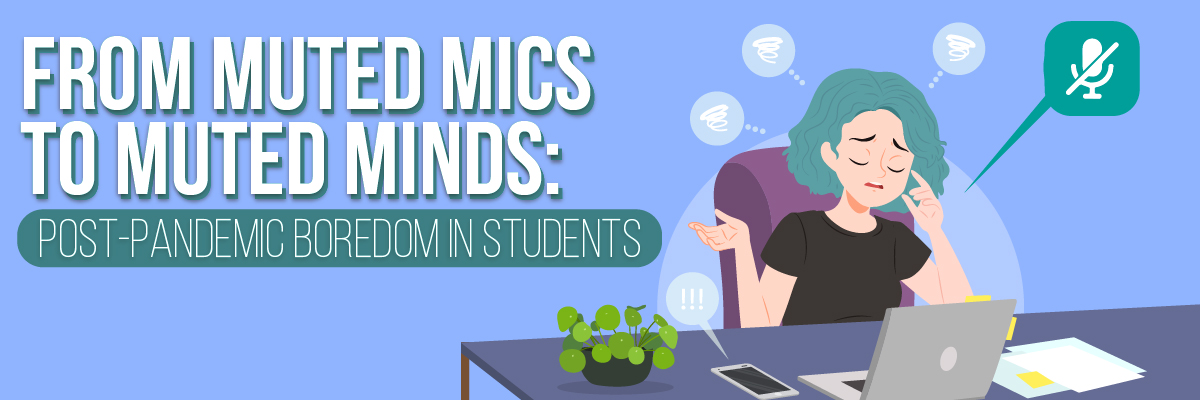
Remember the time when logging into Zoom classes in pajamas or muting your mic while the teacher kept calling out your name felt like the most rebellious thing to do? Or when your mornings used to start with ‘Can you hear me?’ or ‘Are you there?’ chaos? This generation has gone through online schooling with crashing Wi-Fi and choppy audio, just trying to make it through the lecture. A recent study shows that 63% of students found online learning difficult, thanks to bad internet connections, not having learning devices, and distractions that have affected their overall academic performance.
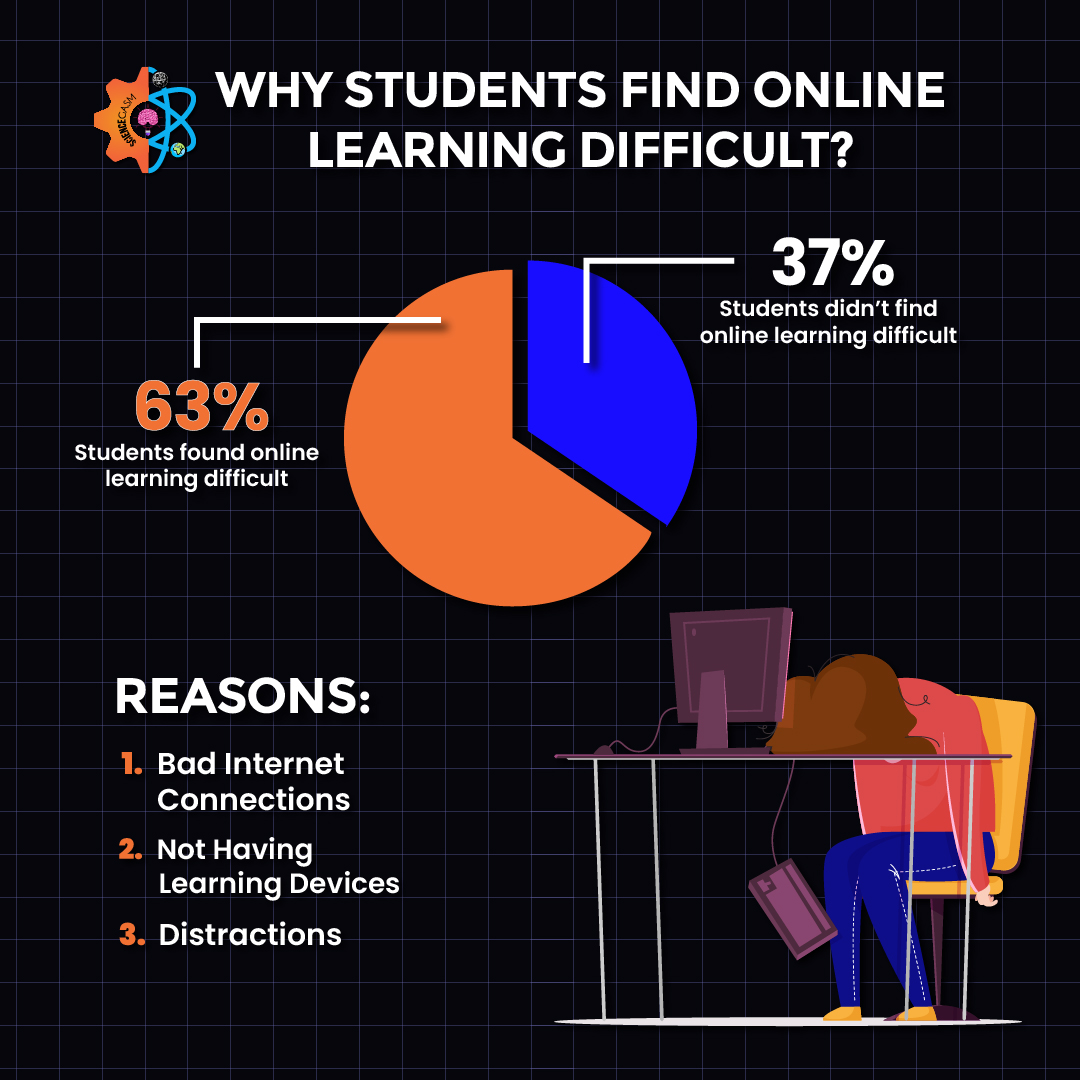
As we’ve discussed in our earlier article ‘Schools Are Boring, Not Science’, we know that boredom is one of the biggest factors that why students hate their schools. Now, this feeling has been amplified since the pandemic that flipped the whole world upside down. Pulling students out of the classrooms and making them sit for hours in front of the screens is forced education. And trust me, that’s one thing students absolutely hate!
To escape this, they found their fun in muting their mics and pulling up weird pranks on their already-exhausted teachers. Fast-forward to today, when these kids are back in classrooms, they struggle to stay awake through the lectures. Let alone rediscover the thrill of learning. This was supposed to be normal. But why does normal feel… so boring?
Pandemic VS Post-Pandemic Learning
Remember the time when classrooms were buzzing with nonstop chatter, last-minute exam panic, and roars of laughter. Life was simple back then. All you had to do was wake up, get dressed, head to school, make notes, and wait for the bell to ring. This wasn’t easy, but it was normal. Suddenly, the Pandemic hits, and one week off turns to a month, which turns into almost a year. Education went digital, and thus began the age of all those online learning platforms.
The excitement of online classes quickly wore off, and students got bored out of their minds. At first it was really convenient to just start your class from under your sheets in the morning but later when students realized that it wasn’t even as near engaging as in person classes; it started to take a toll at their academic performance.
Moreover, too much screen time made people realize that even the most exciting lessons could be so boring. After this wild digital rollercoaster, when these kids returned to school, ‘the supposed normal’, things took a wild turn. They found in-person classes dull, boring, and predictable, like they were on a slow-moving bus ride. Sitting in classrooms again with chalkboards and PowerPoints felt like a step back in time. According to a recent study, only 39.8% of students find lectures engaging, while 61.3% get bored in class on a regular basis. So let’s dissect the post pandemic boredom and see how the loudest of classrooms have gone quiet since Covid-19.
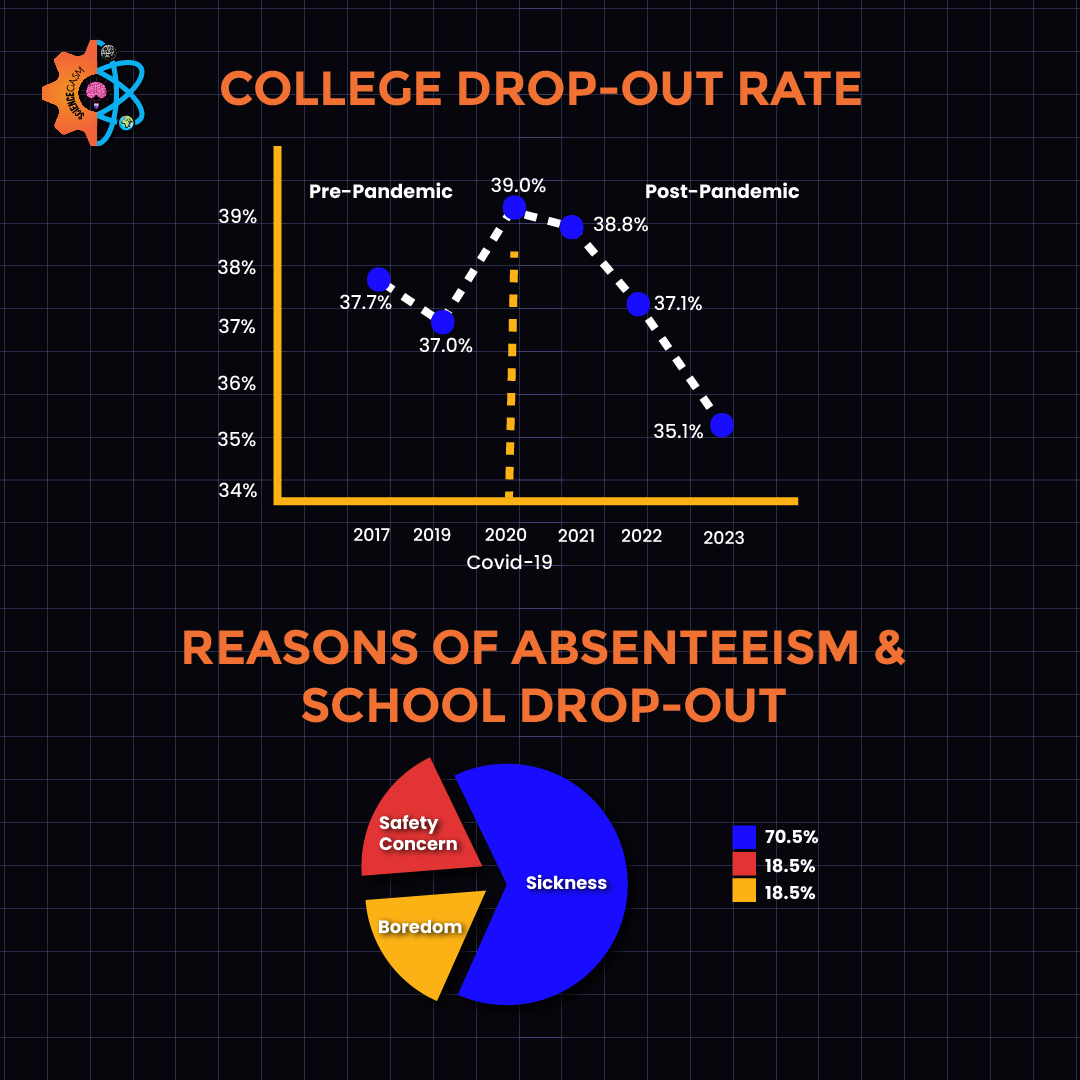
Why Are Students So Bored These Days?
If you talk to students these days, they all will say the same thing: “School is just… boring.” And honestly, they are not wrong. Restless fidgeting, staring out the window, and doodling in the back seat are examples of some common practices you’ll see in a class. But when did boredom become the new normal? The pandemic has changed the way students learn. Online schooling was new, messy, and experimental. It let the students into a world where they had freedom. It taught the students to learn at their own pace. From studying in pajamas to rewinding and recording a lecture, learning has never been this easy!
These kids know what fast information and digital learning feel like. Now, when they are crammed back into their classrooms, the hour-long chalk-and-talk lectures don’t bring excitement, they bring yawns! Boredom has now become one of the leading causes for absenteeism and school drop-out. According to PISA 2022, the most common reason given by students who missed school for more than three months straight, at any education level, was sickness, which accounted for 70.5%. The next biggest reason was lack of safety at school, mentioned by 18.5% of students, while boredom came in third, cited by 18.5% of students.
How the Pandemic Unlocked Classroom Boredom Blues?
The classroom blues are not just boredom, they are a sign of exhaustion! Students went from complete isolation to crowded hallways overnight. Social fatigue after two years of solitude gave rise to boredom. Above all, the pandemic took its toll on students’ mental health. It left scars of anxiety, uncertainty, and burnout. In a packed room of students, the constant ticking of the clock and the teacher’s eyes following each move, add to the stress, making learning difficult and boredom stronger. According to the stats, in 2014, only 37% of 12th graders agreed that they were often bored in school. By 2021, these figures significantly rose to 45%.
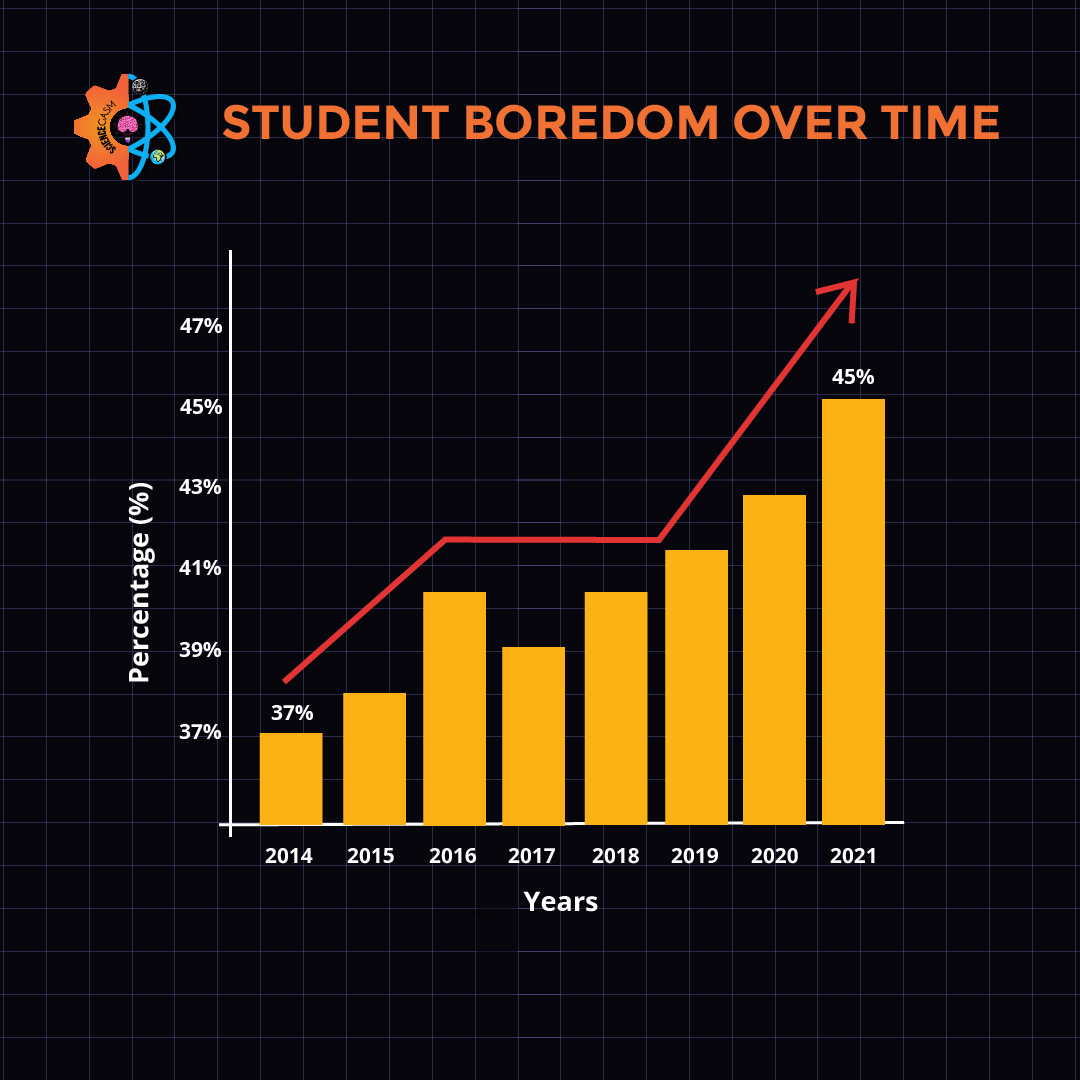
Teachers have also noticed that the classrooms have gone quiet since the pandemic. Students zone out in between the lectures, often found peering at their phone screens or staring out the window. The classroom blues are a de facto reminder that students want school education to evolve. They crave something more than just grades. They crave relevance, creativity, and freedom.
Shaking Off the Learning Slump
Have you ever got stuck reading a paragraph from your book, once, twice, and again, but still nothing’s clicking in? That’s a learning slump! But don’t panic, slumps can happen to anyone and almost everyone. One of the biggest reasons behind a learning slump is Boredom. When you’re bored, your brain shuts down. You lose interest in whatever you’re doing, and the task becomes exhausting and meaningless. Skimming from one page to the next, with your mind elsewhere, makes learning impossible. What starts as boredom leads to procrastination and a work pile-up that often leaves you feeling frustrated and overwhelmed.
The first big step of getting out of a learning slump is realizing that you’re in one. Next, you need to understand that it’s not just boredom, but it’s your old, boring study space. Go for a change, like the library, a coffee shop, or even a park. Instead of setting some big goals, like finishing a whole chapter in a day, try narrowing it down to just three pages. Small wins help boost your mental energy. Make studying feel less like a burden and more like a sport. Use timers, track streaks, flashcards, or reward yourself with your favorite snack. No matter how underwater you are, even just a small step out of the slump is a win.
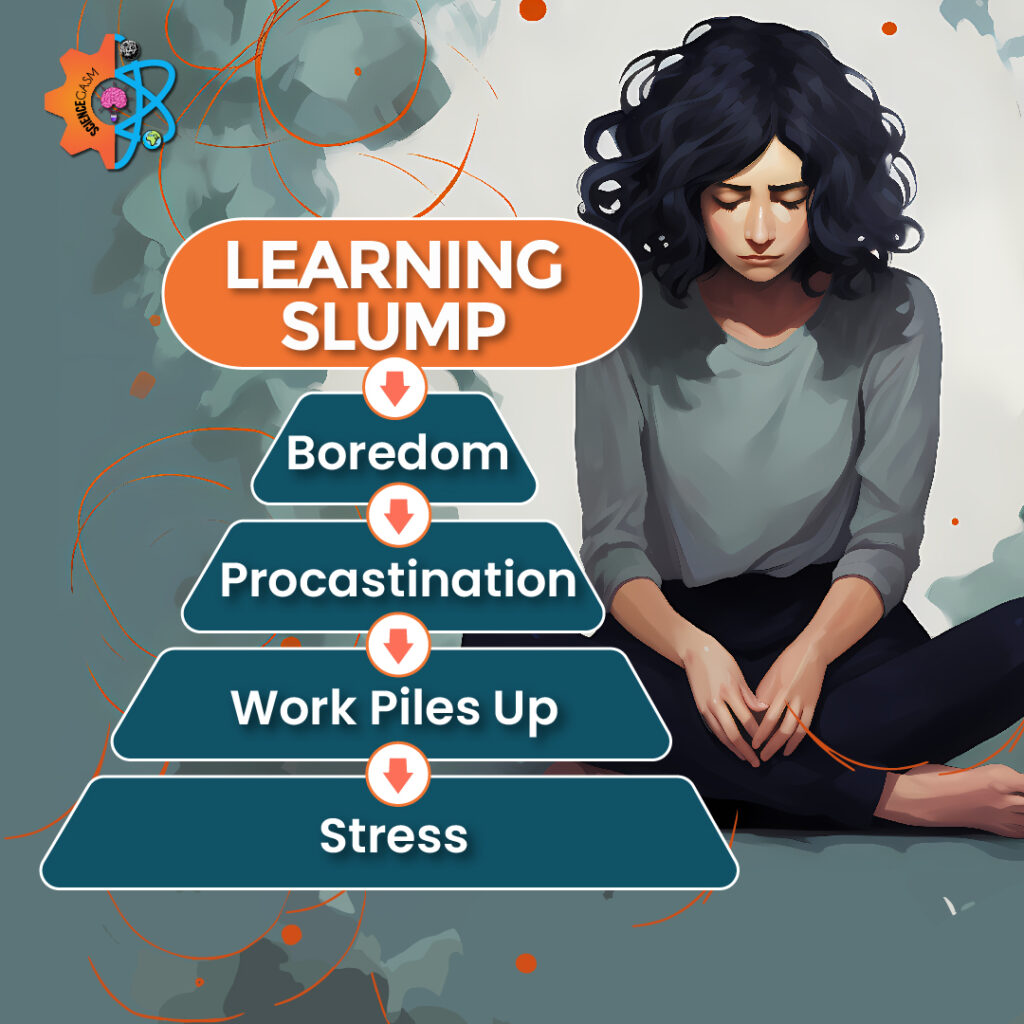
The Curriculum Stayed Frozen in Time – But Students Didn’t
What we need to understand is that these students have lived through a pandemic where they used interactive tech tools and collaborative platforms for learning. Teaching methods used in 2019 don’t work the same in 2025. There’s a gap to bridge between who students are and what the school demands from them. To keep up with the pace of today’s kids, school education needs a makeover by bringing,
- Interactive learning
- Creative tech-full lessons
- Real-world applications
- Short and engaging lectures
It is high time that we blend technology with school learning, making school education not only interesting but also entertaining.

Boredom is not that BAD!
Boredom sparks creativity, and no, I’m not kidding! I mean, yes, boredom can be frustrating at times, especially when there is nothing to distract, but on the flip side, it is often when you’re zoning out or stuck in traffic that your best ideas pop up. We live in a world where everyone is racing through their lives. In this chaos, boredom gives us a chance to slow down and listen to our inner thoughts.
When our mind has nothing to do, it turns into this creative and problem-solving tool that helps us come up with some of the amazing ideas we often wonder why we never thought of. So when life crosses the spectrum from excitement to boredom, just take it as a sign to rest and wait for your next big idea.

